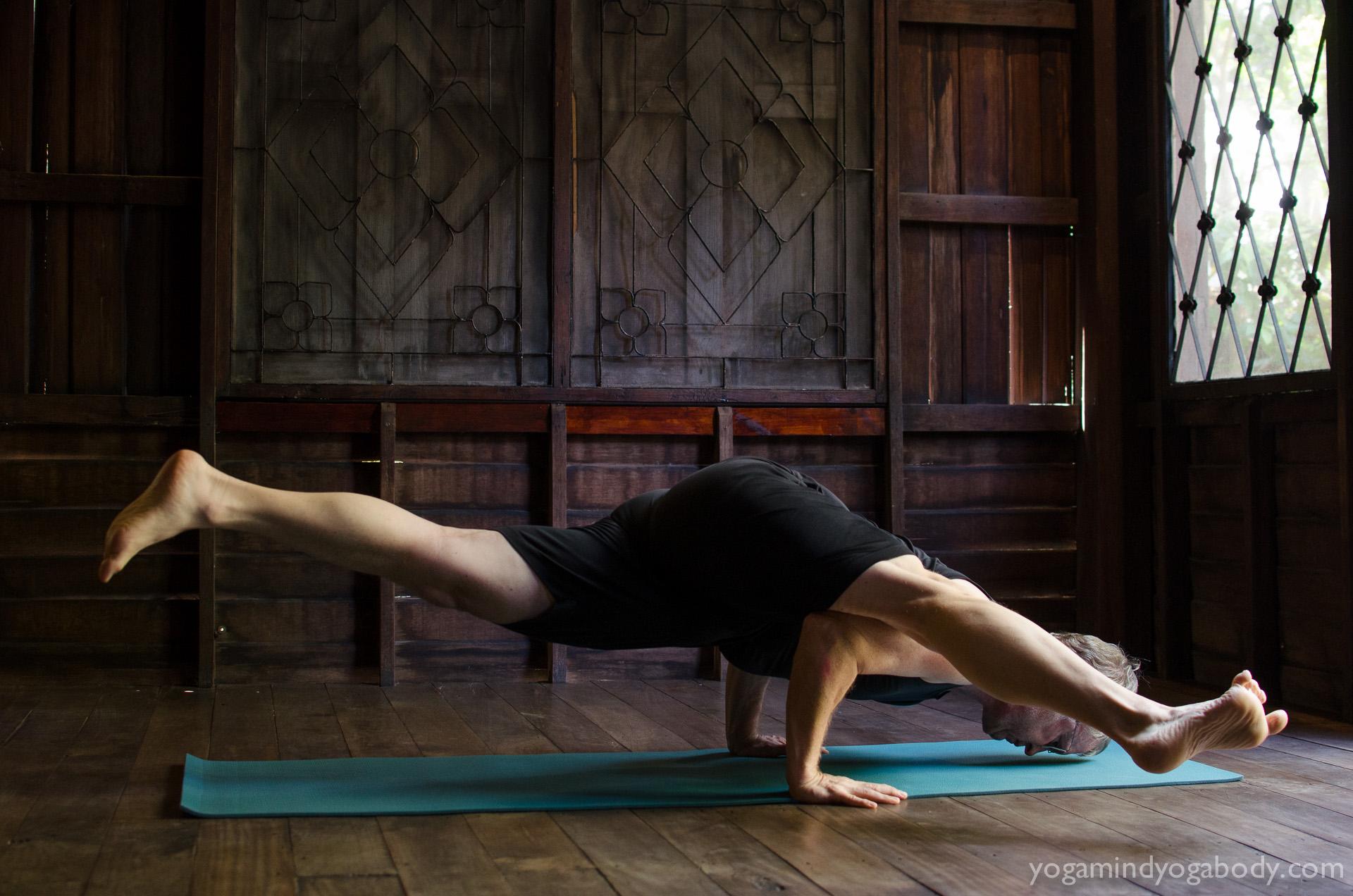The True Joy of Flying
Arm Balances, Biomechanics, Mindfulness and Joy
Arm balances and other physically challenging poses can teach you something about mindfulness that a gentle practice cannot. They can teach you how not to get stressed out when stressful things are happening. The practice is one of intentionally tempting yourself away from mindfulness by dangling an attractive goal in front of you, so you can learn to recognize that detrimental pattern and disrupt it. Let me emphasize that the goals are not the problem. It’s the attachment to the goals that’s the problem, the feelings that your happiness is dependent on the achievement of your goals.
Cost: $75

We are pre-disposed to fall into the trap of goal-attachment, and there are only two ways to avoid that trap:
1. Remove all chance of temptation from your life, which is the idea behind becoming a hermit. It’s also the idea behind gentle movement practices like Feldenkrais and Gentle Yoga.
2. Learn how to notice temptation arising, and learn how to disrupt it. This is the idea behind this arm balances workshop. In order to practice letting go of your goals, you have to expose yourself to the temptation of goal achievement. Arm balances and other physically difficult poses can be exceedingly useful for increasing your wellbeing because they allow you to practice not getting stressed out when stressful things are happening.
In this workshop, we will intentionally challenge our physical abilities to observe what happens when we do: The triggering of the stress response, an obsession with goal achievement, and the loss of mindfulness and joy. However, falling into this trap is not inevitable. In this workshop we will learn how to disrupt the stress response when it is triggered. Disrupting the stress response requires mindfulness, but its successful disruption in turn increases our capacity for mindfulness and joy, creating a positive feedback loop. Lastly, being stressed out limits our movement options in ways that are often counterproductive in arm balances. Thus learning to disrupt the stress response in arm balances can actually facilitate these challenging poses because we can create biomechanically more effective patterns of movement.
Topics
Chapter 1: Why Neck Tension is so Prevalent in Arm Balances
Chapter 2: Arm Balances that Benefit from More Open Hips
Chapter 3: Unsupported Arm Balances and Strength Building Exercises
Course Objectives
- Learn to notice when you invoke the stress response even when it does not serve you
- Understand how the stress response can actually prevent better movement
- Discover how crucial hip range of motion is for arm balances where your arms support your legs
- Learn how to deconstruct arm balances to practice each challenge on its own
- Discover the connections between movement and thought patterns and how to use these connections to your advantage
- Facilitate arm balances by letting go of what you think you know about how to move
This Course Includes
- Over 170 minutes of on-demand videos
- Lifetime access
- Lectures and experiential exercises
- Lifetime email support for questions related to the workshop
- Downloadable and printable Practice Guide with detailed written and photographic instructions for all the exercises covered in the course, so that you can continue practicing them with ease.
